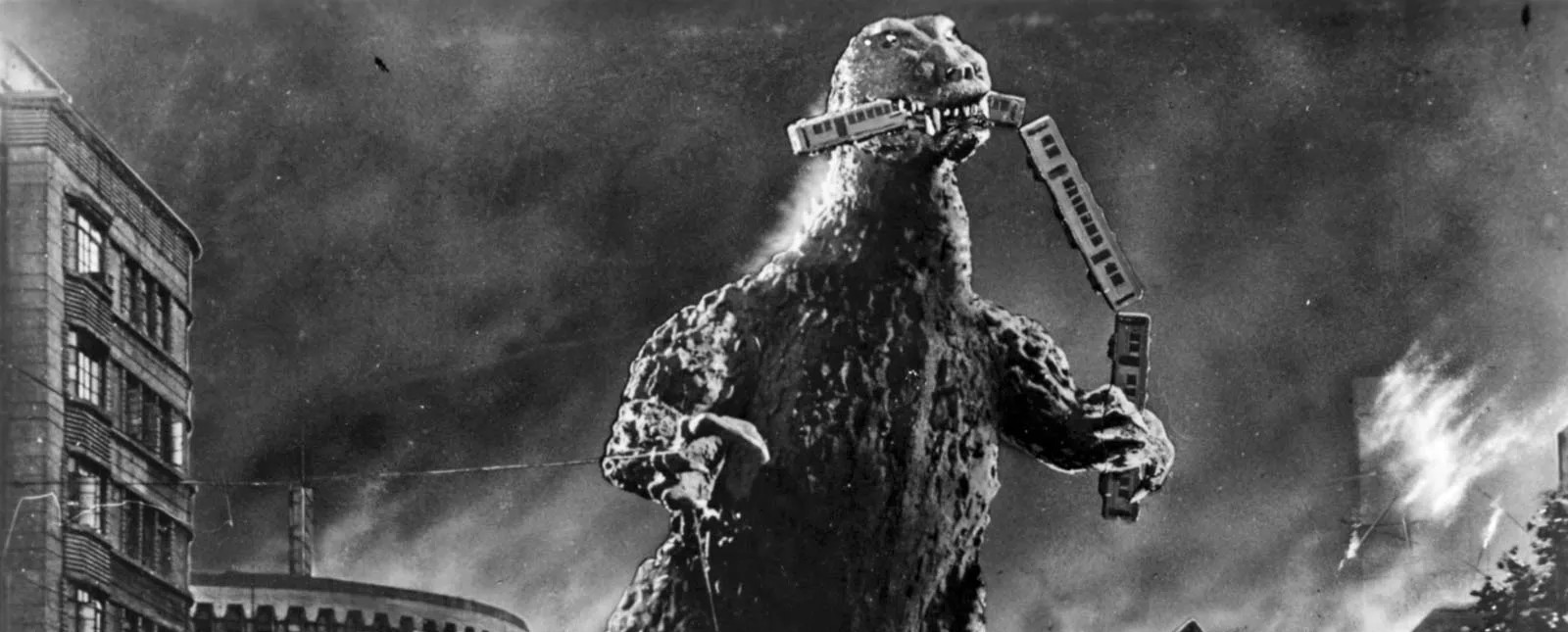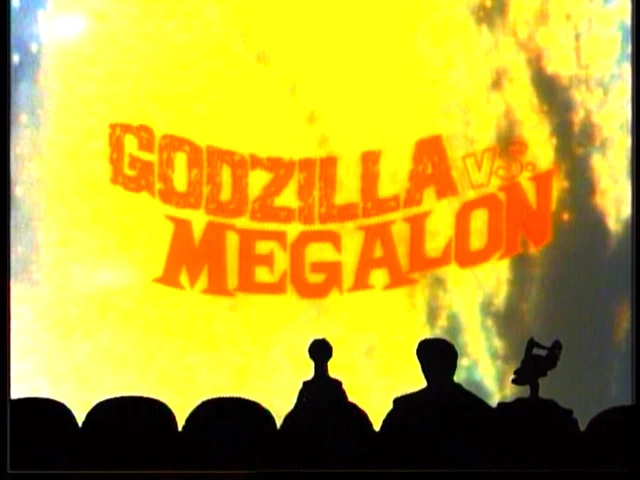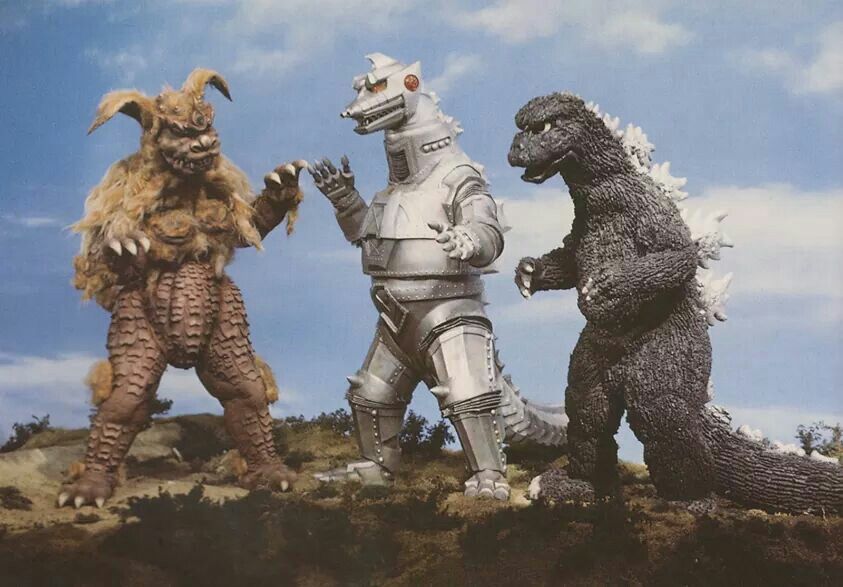When people tend to discuss Ishiro Honda’s seminal 1954 sci-fi classic in terms of thematic depth and social commentary, it isn’t long before someone inevitably mentions that the titular giant monster is an allegory for the use of nuclear bombs on Japan by the United States of America during the end days of the second world war. It’s an established fact that the film was openly anti-bomb and heavily featured imagery that was deliberately evocative of the rubble of Hiroshima and Nagasaki. It’s arguably a fact just as famous as the movie itself, everyone and their mothers can tell you all about how Godzilla is just a giant walking tumor fueled by a nuclear reactor, or how the scenes in which the survivors of his attack are treated much the same way as real-life survivors of the nuclear bomb. It’s a piece of Godzilla history so intertwined with the conception of the monster that the creature and franchise alike have yet to be spoken of in a sentence that does not in some way incline towards discussing its sociopolitical commentary.
However, having seen the film, God knows how many times over the past 15 or so years since I first watched it. I think that a far more interesting interpretation of the movie and its messaging is one that pertains foremost to power and its relationship to human nature, as opposed to the simple “bomb bad” narrative it’s often intertwined with. After all, the bomb isn’t actually ever mentioned in the movie at all, but the characters spend a great deal of time pontificating upon the nature of power. There are three key factors as to the power-commentary imposed upon the movie; foremost, there is director Honda, an ardent pacifist and anti-nationalist; secondly, there is Godzilla himself; and there is also the character of Dr Serizawa. This tribunal orchestrates a complex narrative that explores man’s capacity to destroy itself.
Honda himself was a veteran of the Second World War; going into it, he had no proclivity towards the Nazi-aligned nationalism of his country, but he came away from it a steadfast pacifist and humanist who was staunchly anti-war. Honda was born in 1911 to a Buddhist Monk and lived most of his childhood in near-total isolation from the world beyond his village. He didn’t see a film, let alone formulate a love for the form, until he was well into his high school career. He pursued his passion, but was ultimately drafted into the Second World War before he could make his directorial debut.
Honda’s experiences in World War II would come to define him as both a person and a filmmaker. Positioned in China, Honda witnessed the atrocities committed by his people against the Nation. He was eventually taken Prisoner of war, and later attested that his treatment in a POW camp was more humane than that which he suffered serving under his own army. His anti-war stance was furthered when he gained a greater appreciation for life after a near-death experience saw a grenade land directly next to him – luckily, it would never go off, and he’d keep it on his desk for the remainder of his life. Returning home, Honda would travel through the rubble of Hiroshima and Nagasaki, gazing upon the greatest
wounds ever inflicted upon humankind by itself. To say that the director viewed this as existentially terrifying would be an understatement, and his work is deeply reflective of that.
That leads us to Godzilla, a creature literally born of that radioactive self-mutilation. Godzilla isn’t much of a character in the classic movie; his personality would later be defined by the myriad of sequels that would follow in the seven decades subsequent to its release. Godzilla in his debut appearance, is a force of undeniable existential power, a beast scarred by radiation burns, determined to inflict upon man that which they had done to him. The sequence on Odo Island, wherein Godzilla ravages the town and makes his first full appearance, establishes him as a force of nature, creating an enormous tidal wave and
crushing the inhabitants like an angry deity.
It isn’t until the final few moments of the movie that it becomes apparent just how tragic of a beast Godzilla actually is. As the all-powerful oxygen destroyer is unleashed, we get a glimpse of the monster before his death, sitting ponderously in the ocean like a tired animal. His final roar as death envelops him is not one of vengeful fervour, but of agony and perhaps even sadness. A life lived in pain, born to tragedy, and slain in horror.
The radioactive trail left in his wake is what most people align with the nuclear bomb; his atomic breath and thundering footsteps only further evoke such destruction. Godzilla is without a doubt an abstract horror made manifest, something so inconceivable as the atom being split is born a form of a dragon, divine and broken; a creature of godlike stature, injured by man’s own hubris and left a scarred shadow of whatever it once was. It’s a powerful metaphor, and one that works very well. In the explosion of an atomic bomb, there is no slow marching apocalypse, just instant annihilation; Godzilla is just about all that one can imagine such a demise and devastation would feel like. Death Walking.
Lastly, there is Dr Serizawa, played by the impeccable Akihito Hirata, a scientist and veteran who has created the only device that could defeat Godzilla – the Oxygen Destroyer. Therein lies the crux of the film’s third act, as the cast all plead with the doctor to use his device and end their misery. Serizawa oscillates between outright refusal and hesitant defeat. He fears that once his device is unleashed upon Godzilla, upon a god, then the nuclear arms race is born anew, and this time destruction rests upon his bloody hands. In this, Serizawa, as a character draws significant parallels to the real life J. Robert Oppenheimer, designer of the Atom bomb who later deeply regretted his actions and believed he had created something of such power that man should not trifle with.
Serizawa takes that a step further: if Godzilla is the bomb made manifest, then how incomprehensibly powerful is his dreadful device? It’s the central question of the movie, one that is perhaps furthered by the Odo Islanders’ reverence of Godzilla as a literal deity. Here, Honda directly aligns the power of the Atom to that of divine terror. So then, if mankind has achieved a weapon so monumentally terrible that its usage bore a wrathful God, what right do we have to create something even worse?
Serizawa ultimately takes his own life in using the Oxygen Destroyer; both he and Godzilla succumb to a death several fathoms beneath the sea. His notes are destroyed, and he has saved humankind, but the film’s closing lines make it clear that so long as mankind continues to harness the power to destroy itself, then this isn’t anywhere near over. It’s a bleak ending that separates Honda’s movie from the litany of other giant monster B-movies of the era, and one that has since become all the more ironic as the franchise rapidly approaches its 39th instalment.
Overall, Godzilla is a film about power, how we use it, what right we have to use it, and the repercussions of using it. The atom bomb may have been the catalyst for the film, in both its diegesis and real-world conception, but Honda also used it to explore his fears that one day mankind will achieve a power so great that self-destruction will become an inevitability. He uses both the characters of Godzilla and Serizawa, as well as his own lived experiences as a veteran to make something haunting, tragic, beautiful, and resonant. When Honda first began production of the movie, he asked everyone involved to leave the film if they felt that they could not take the premise seriously, and though nobody left, I find it hard to believe that anyone saw this film the same way he did. This is his masterpiece.





